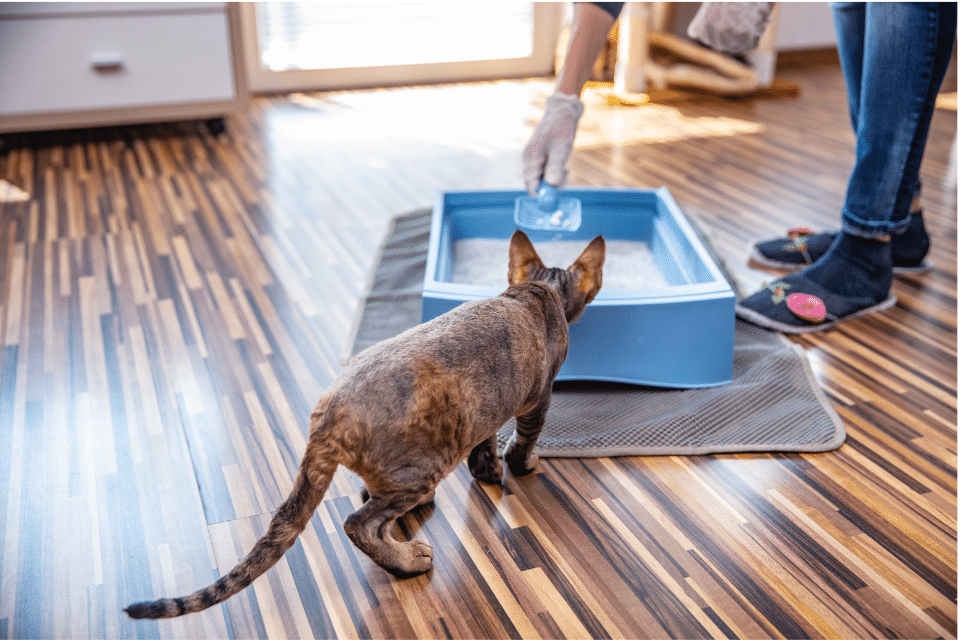
Bringing a new kitten into your home is an exciting experience. As a responsible cat owner, one of the essential skills to teach your feline friend is how to use a litter box. A well-trained kitten will save you from potential messes and ensure a clean and hygienic living environment for both you and your pet. In this comprehensive guide, we will explore effective techniques and strategies to help you train your kitten to use a litter box.
Litter Box Training Basics Litter box training is a process that requires patience, consistency, and positive reinforcement. The following steps will help you establish a successful litter box training routine for your kitten:
-
Set up the Litter Box: Choose an appropriate litter box for your kitten. Opt for a shallow box with low sides to allow easy access for young kittens. Place the litter box in a quiet and private area of your home, away from their food and sleeping area. Make sure it is easily accessible to your kitten.
-
Introduce the Kitten to the Litter Box: After bringing your new kitten home, show them the location of the litter box. Gently place them inside the box, allowing them to explore and become familiar with the litter and the box itself. Avoid forcing them to use it; instead, let them adjust at their own pace.
-
Observe and Encourage: Pay close attention to your kitten’s behavior and body language. Scratching the floor, sniffing around, or restlessness may indicate that they need to eliminate. When you notice these signs, gently place them in the litter box, allowing them to associate it with toileting. Be patient and consistent with this step.
-
Positive Reinforcement: When your kitten uses the litter box successfully, provide immediate positive reinforcement. Offer verbal praise, gentle strokes, and occasional treats to create a positive association with using the litter box. This positive reinforcement encourages your kitten to continue using the litter box.
Training Duration and Factors Affecting Progress The time it takes to litter box train a kitten can vary depending on several factors. Understanding these factors can help you set realistic expectations:
-
Age of the Kitten: Kittens typically learn litter box skills from their mother and siblings at around four weeks of age. If you adopt a kitten younger than this, they may require extra time and guidance to grasp the concept of using a litter box.
-
Previous Experience: If your kitten has had previous exposure to a litter box, they may catch on more quickly. However, if they were previously living outdoors or in an environment without a litter box, they may need additional patience and training to adapt.
-
Individual Personality and Temperament: Every kitten has a unique personality. Some kittens may be more adventurous and quick to learn, while others may be more cautious or shy. Tailor your training approach to suit your kitten’s personality, providing the support and encouragement they need.
-
Consistency and Reinforcement: Consistency is crucial during the litter training process. Ensure the litter box is always accessible, clean, and properly maintained. Scoop the litter box daily, replace the litter regularly, and clean the box to keep it fresh and inviting for your kitten. Consistently reinforce positive behavior with praise and rewards.
Tips for Successful Litter Box Training In addition to the basic training steps and understanding the factors that influence progress, here are some additional tips to enhance the effectiveness of litter box training:
- Multiple Litter Boxes: If you have a large house or multiple levels, consider placing multiple litter boxes in different locations. This provides convenient accessfor your kitten and reduces the likelihood of accidents due to long distances or inaccessible litter boxes.
-
Litter Preference: Cats have individual preferences when it comes to litter. Experiment with different types of litter to find one that your kitten prefers. Some cats may prefer fine-textured litter, while others may prefer a softer or coarser texture. Additionally, some cats may be sensitive to strong scents, so using unscented litter is often a good choice.
-
Addressing Accidents: Accidents may occur during the litter training process. If your kitten eliminates outside the litter box, it’s

-
Patience and Positive Reinforcement: Remember to be patient and avoid punishing your kitten for accidents or failure to use the litter box. Punishment can create fear and anxiety, making the training process more challenging. Instead, redirect your kitten to the litter box when accidents happen, and provide positive reinforcement when they use the litter box correctly. Consistency and positive reinforcement will help your kitten associate the litter box with positive experiences.
-
Gradual Exploration: As your kitten becomes more comfortable with using the litter box, you can gradually expand their access to the rest of the house. Monitor their behavior closely during this transition and provide litter boxes in different areas until you are confident that they understand the concept. This gradual exploration allows your kitten to feel secure and confident in their litter box habits.
-
Training aids and attractants: Sometimes, kittens may need a little extra help in recognizing and using the litter box. There are several training aids and attractants available in the market, such as litter box attractant sprays or additives that can help draw your kitten’s attention to the litter box. These products can be particularly useful if your kitten is struggling with litter box training.
-
Seek Veterinary Advice if Needed: If you’re facing challenges in litter box training despite consistent efforts, it’s a good idea to consult with your veterinarian. They can rule out any potential underlying health issues that might be causing the problem and provide further guidance based on your kitten’s specific needs.
Litter box training is an important part of raising a kitten and maintaining a clean and hygienic living environment. By following a systematic approach that includes setting up the litter box, introducing the kitten, observing their behavior, providing positive reinforcement, and being patient and consistent, you can successfully train your kitten to use the litter box. Remember to consider individual factors, such as the kitten’s age, previous experiences, and personality, and adapt your training techniques accordingly. With time, patience, and positive reinforcement, your kitten will develop good litter box habits, ensuring a happy and healthy living environment for both of you.





